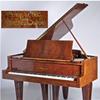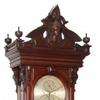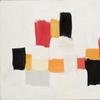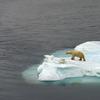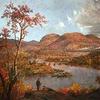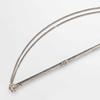Take a Ten-Minute Forest Bath on Earth Day With These Artworks From the NGA's 'True to Nature' Exhibition
- April 21, 2020 14:18
While April 22 marks the 50th anniversary of Earth Day celebrations, artists over centuries have trekked outdoors to create landscape sketches that capture the magnificence of nature and offer an enduring homage to Earth's beauty.
An integral part of art education in the late 18th and early 19th centuries, painting en plein air (in the open air) was a core practice for artists in Europe. Intrepid painters—developing their abilities to quickly capture effects of light and atmosphere—made sometimes arduous journeys to study landscapes at breathtaking sites, ranging from the Baltic coast and Swiss Alps to the streets of Paris and ruins of Rome.
True to Nature: Open-Air Painting in Europe, 1780–1870 presents some 100 oil sketches made outdoors across Europe by artists such as Carl Blechen, Jules Coignet, André Giroux, Anton Sminck Pitloo, Carl Frederik Sørensen, and Joseph Mallord William Turner. Currently on view online from the National Gallery of Art, Washington, the exhibition presents dozens of recently discovered studies and explores issues of attribution, chronology, and technique.
Take a virtual tour of the exhibition. To purchase the exhibition catalog, visit shop.nga.gov.
"The Gallery is fortunate to have one of the finest public collections of landscape sketches by 18th- and 19th-century European painters, largely due to acquisitions made by the late Philip Conisbee during his time as the Gallery's senior curator of European paintings from 1993 to 2008," said Kaywin Feldman, director, National Gallery of Art, Washington. "True to Nature builds on recent scholarship as well as the discovery of paintings that have come to light since the 1996 exhibition organized by Conisbee, In the Light of Italy: Corot and Early Open-Air Painting. That exhibition sparked curatorial and collector interest in this genre, and True to Nature continues to expand our understanding of this relatively unstudied, yet central, aspect of European art history. The Gallery is grateful to work with the Fondation Custodia, Collection Frits Lugt, and the Fitzwilliam Museum to bring together highlights from the best collections of European landscape sketches from this period."
(Before current closures took place due to covid-19, the exhibit was scheduled to travel to Fondation Custodia, Collection Frits Lugt, Paris, June 13–September 13, 2020, and Fitzwilliam Museum, Cambridge, October 6, 2020–January 31, 2021. Check the museums' websites for updates.)
True to Nature begins as European artists would have in the late 18th and early 19th century—in Rome. The study of ancient sculpture and architecture, as well as of Renaissance and baroque art, was already a key part of an artist's education, but Pierre-Henri de Valenciennes's influential treatise on landscape painting, published in 1800, went further to recommended that young artists develop their skills by painting oil sketches out of doors. Valenciennes advised exploring the Roman countryside, as he had in Study of Clouds over the Roman Campagna (c. 1782/1785). This section includes examples by a range of European artists who followed his advice, such as Michel Dumas, Christoffer Wilhelm Eckersberg, and Johan Thomas Lundbye. Also included is The Island and Bridge of San Bartolomeo, Rome (1825/1828) by Jean-Baptiste-Camille Corot. Corot was a key figure in 19th-century landscape painting, bringing the practice of open-air painting back to France and inspiring a younger generation of impressionist painters.
Other sections focus on both natural and man-made features that proved challenging to painters, such as waterfalls, trees, skies, coastlines, and rooftops. Examples include rare studies by well-known artists such as John Constable's Sky Study with a Shaft of Sunlight (c. 1822, Fitzwilliam Museum), Jean Honoré Fragonard's Mountain Landscape at Sunset (c. 1765), and Odilon Redon's Village on the Coast of Brittany (1840–1916, Fondation Custodia) as well as sketches by lesser-known painters like Louise-Joséphine Sarazin del Belmont, one of the few known women artists active during this period. True to Nature illustrates how pervasive plein-air painting became across Europe with examples by many Belgian, Danish, Dutch, German, Swiss, and Swedish artists who studied in Italy before returning home to paint their native surroundings. Sketches by Carl Blechen include an example from his time in Italy, View of the Colosseum in Rome (1829, Fondation Custodia), as well as a study made at home in Germany, View of the Baltic Coast (1798-1840), Fondation Custodia).
With some 140 color illustrations and 250 pages, the exhibition catalog is available at shop.nga.gov






